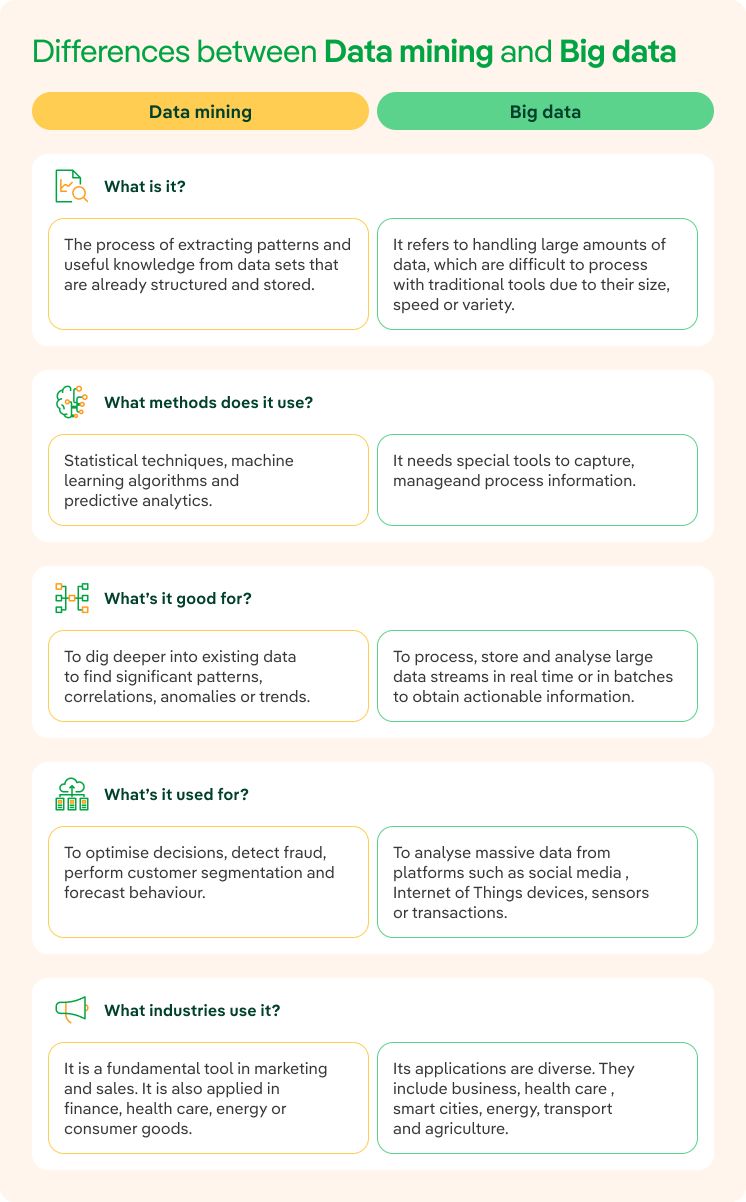Data mining: definition, examples and applications
Discover how data mining will predict our behaviour
Data mining has opened a world of possibilities for business. This field of computational statistics compares millions of isolated pieces of data and is used by companies to detect and predict consumer behaviour. Its objective is to generate new market opportunities.

What is Data mining?
Data mining is an automatic or semi-automatic technical process that analyses large amounts of scattered information to make sense of it and turn it into knowledge. It looks for anomalies, patterns or correlations among millions of records to predict results, as indicated by the SAS Institute, a world leader in business analytics.
In the meantime, information continues to grow and grow. Some estimates suggest that 90% of the world's data has been created in the last two years and the United Nations predicts it will grow by 40% a year. In this context, data mining presents itself as a relevant strategic practice for companies using business intelligence.
Thanks to the joint action of analytics and data mining, which combines statistics, Artificial Intelligence (AI) and automatic learning, companies can create models to discover connections between millions of records. Some of the possibilities of data mining include:

To clean data of noise and repetitions.
 Extract the relevant information and use it to evaluate possible results.
Extract the relevant information and use it to evaluate possible results.
Make better and faster business decisions.
Examples of data mining applications
The predictive capacity of data mining has changed the design of business strategies. Now, you can understand the present to anticipate the future. These are some examples of data mining in current industry.

Internet of Things (IoT)
Are we ready for the world that new technologies will bring?

STEM professionals
STEM Education: the careers with the greatest demand and future.

Predictive maintenance
The key data-driven technique for anticipating errors.

Small data
The data that makes the difference. All brands want to get their hands on it.
Data mining: a profession of the future
Today, data search, analysis and management are markets with enormous employment opportunities. Data mining professionals work with databases to evaluate information and discard any information that is not useful or reliable. This requires knowledge of big data, computing and information analysis, and the ability to handle different types of software.
The Statista portal estimates that the global big data analytics market will reach around $84 B in 2024 and grow to $103 B by 2027. This expansion is driven by AI, which is expected to affect 92% of Information and Communication Technology (ICT) jobs in the coming years, according to a report by the tech company Cisco Enlace externo, se abre en ventana nueva. . According to the company, this AI development will entail a moderate to high transformation of job profiles with a redefinition of employee skills, placing emphasis on AI literacy, data analysis and rapid engineering.
Enlace externo, se abre en ventana nueva. . According to the company, this AI development will entail a moderate to high transformation of job profiles with a redefinition of employee skills, placing emphasis on AI literacy, data analysis and rapid engineering.












